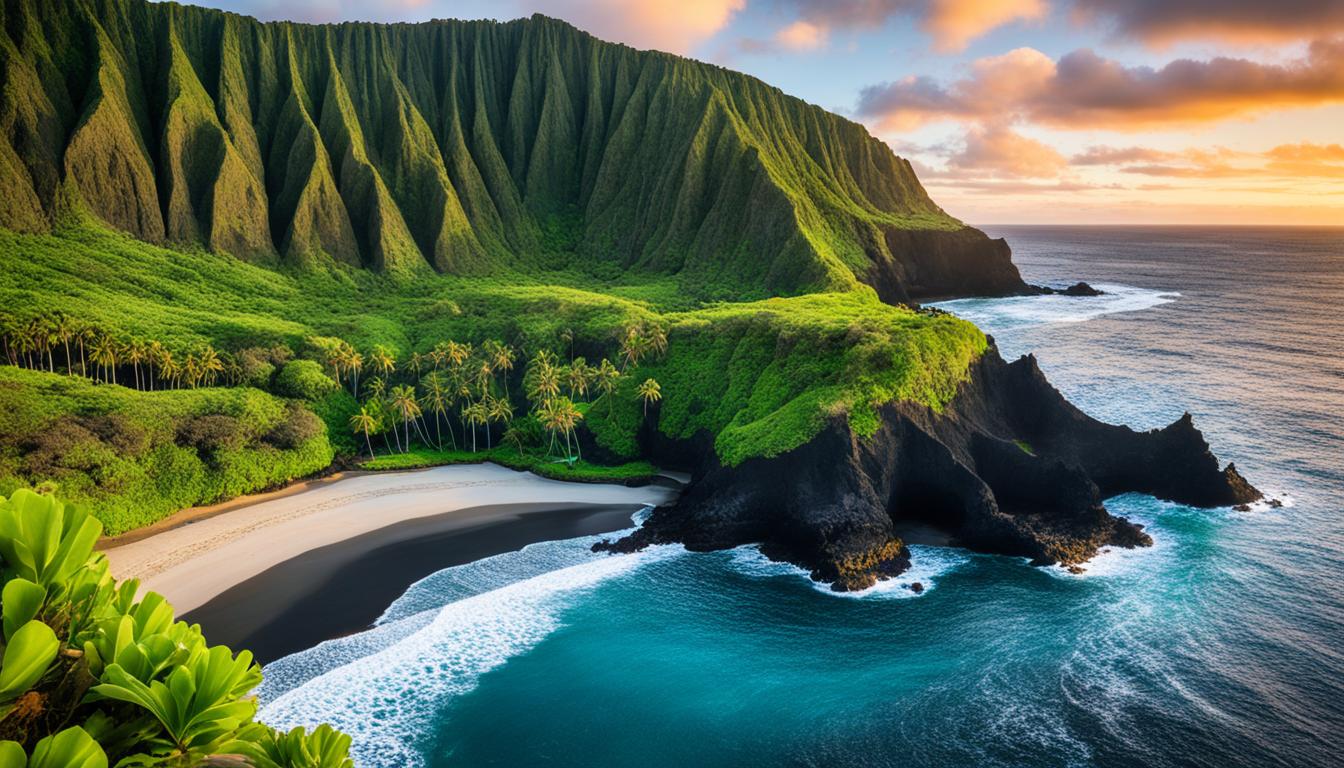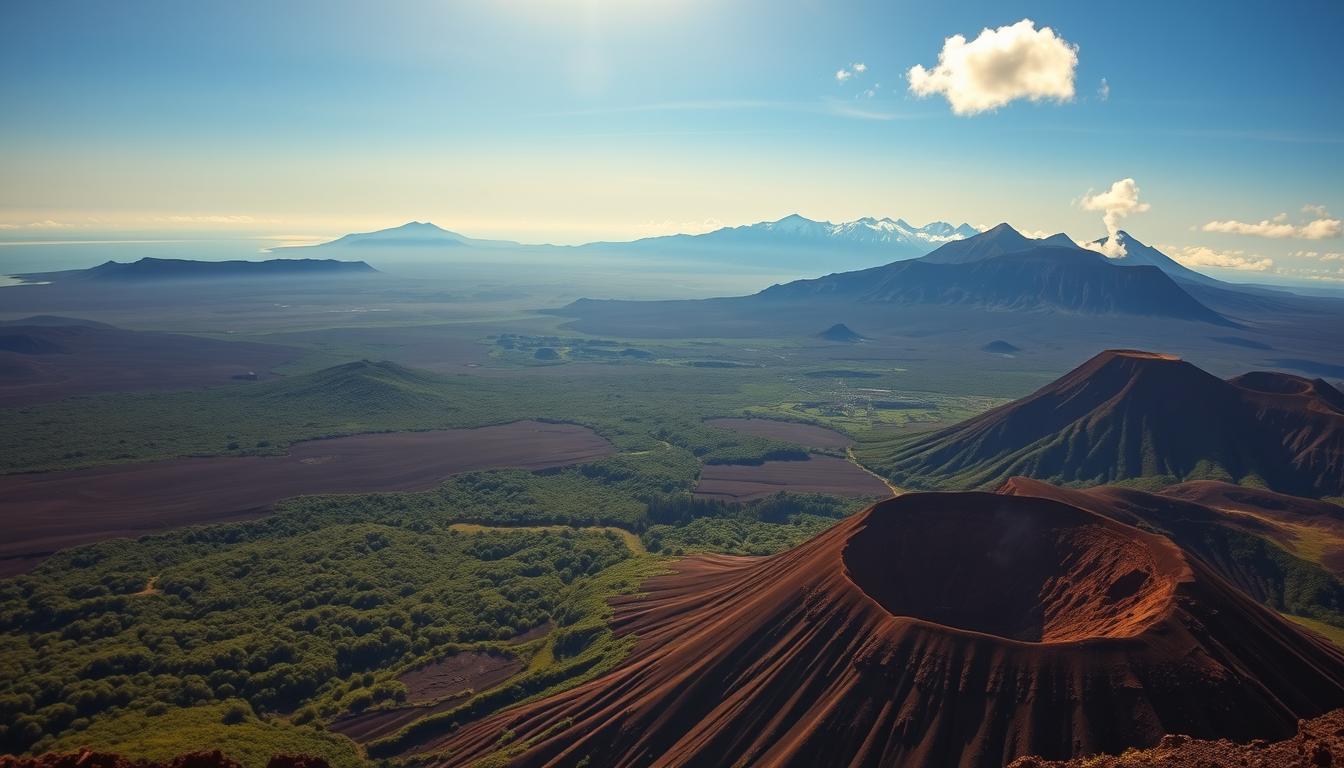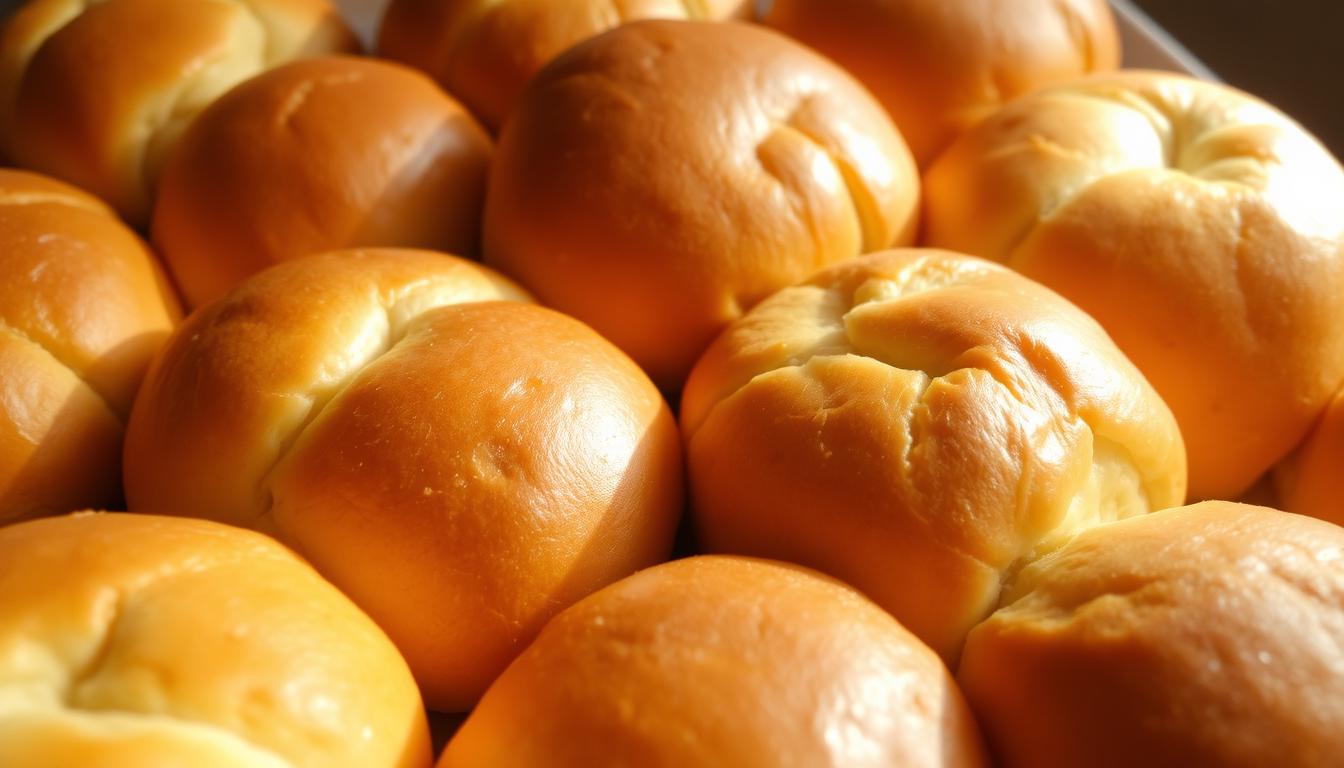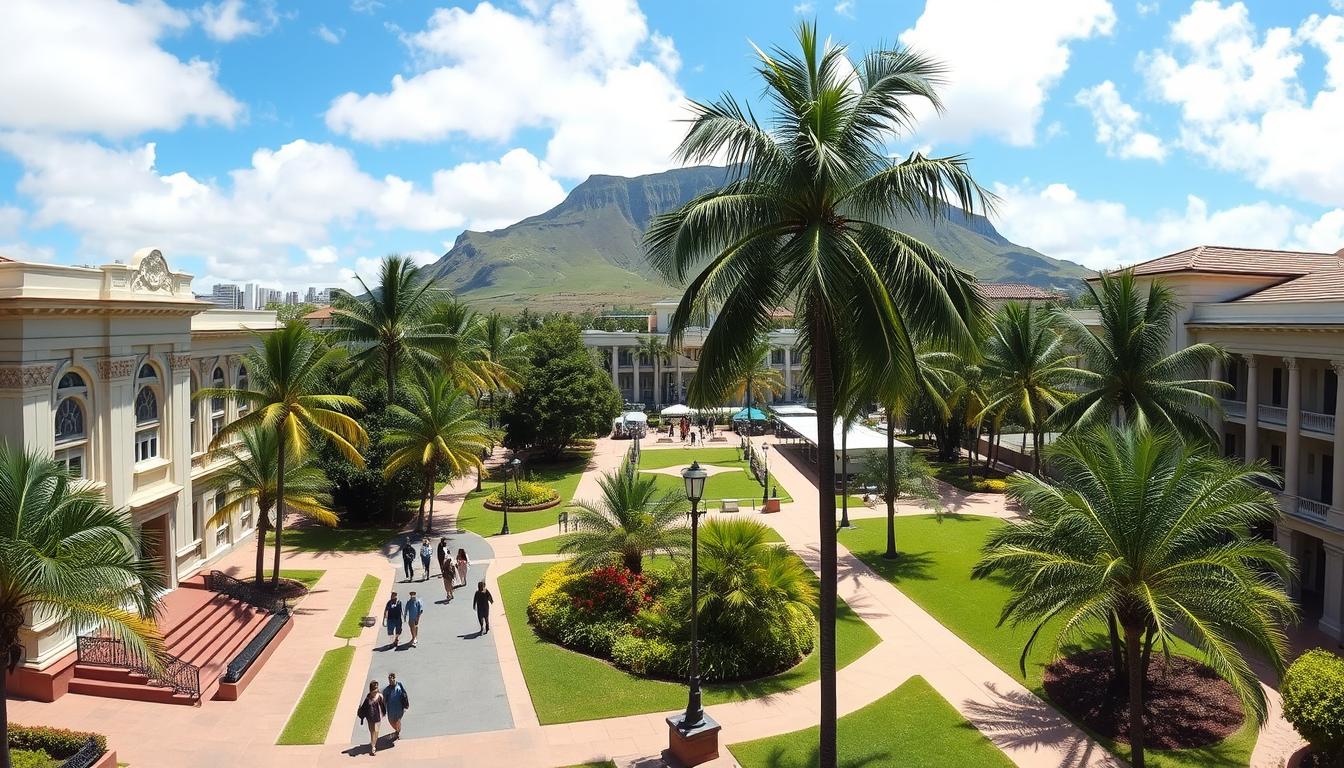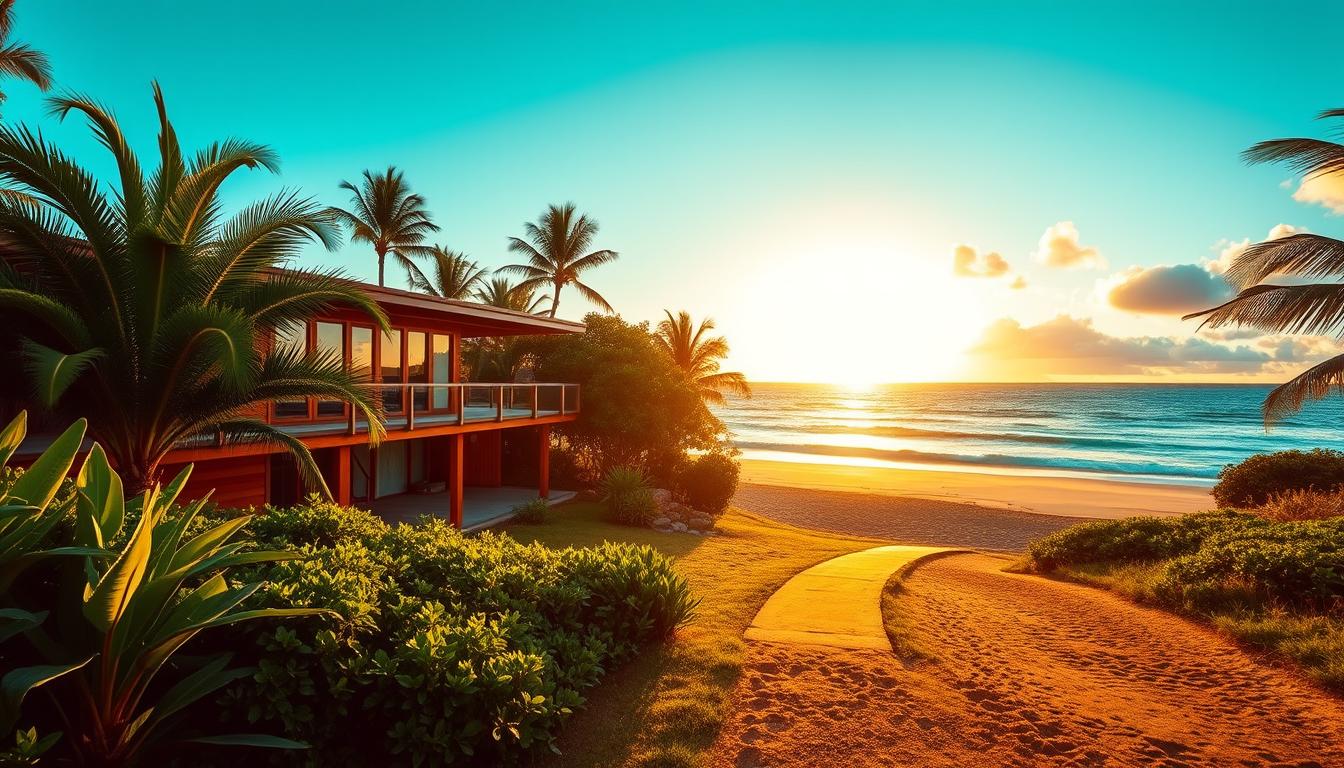Hawaii, situated in the Pacific Ocean, harbors a remarkable natural phenomenon – the breathtaking black sand beaches. These coastal marvels, sculpted by volcanic activity, present a striking juxtaposition of jet-black sands against the azure Pacific. The Big Island’s Punaluu Black Sand Beach and the secluded Kehena Beach stand out, offering an immersive experience for all who visit.
The volcanic forces that have molded these landscapes reveal the raw power of nature. The marine life that thrives in these ecosystems showcases the region’s biodiversity. These black sand beaches, whether for a serene retreat or an adventurous day, promise an experience that will leave you in awe of Hawaii’s volcanic heritage.
Key Takeaways
- Hawaii is home to stunning black sand beaches formed by volcanic activity
- These unique beaches offer a captivating contrast between the jet-black sands and the azure waters
- Explore the raw power of volcanic forces and marvel at the diverse marine life
- Experience the resilience and beauty of these dynamic coastal landscapes
- Discover famous black sand beaches like Punaluu and Kehena on the Big Island
Hawaii’s Volcanic Black Sand Beaches
Hawaii’s black sand beaches are a vivid testament to the islands’ volcanic history. These beaches emerge from the fiery past, shaped by molten lava that cools rapidly upon hitting the ocean. This process yields the distinctive black sand that graces several Hawaiian coasts. The beaches’ dark color and coarse texture stem from this geological marvel, providing an unparalleled coastal experience.
Formation and Characteristics
The genesis of Hawaii’s black sand beaches lies in the islands’ volcanic activity. Lava flows into the ocean, undergoing an immediate temperature drop that solidifies it into fine, black sand particles. This rapid cooling imparts the sand with its characteristic dark color and rough texture. The sand’s grain size and shape fluctuate, influenced by the eruption’s intensity and lava cooling rate.
These beaches are not merely visually striking but also offer a unique blend of geological and ecological wonders. The black sand’s composition includes minerals like olivine, sometimes yielding green gemstones. Moreover, these shores are home to marine life, such as sea turtles, which find the beaches ideal for nesting and sunbathing.
| Location | Characteristics |
|---|---|
| Punaluu Beach, Big Island | Renowned for its striking black sand and frequent sea turtle sightings |
| Papakolea Green Sand Beach, Big Island | Features a unique blend of black sand and green olivine crystals |
| Waianapanapa State Park, Maui | Offers a picturesque black sand beach along the famous Road to Hana |
For those intrigued by the volcanic beach formations or the diverse marine life they harbor, Hawaii’s black sand shores are an essential destination. They offer a glimpse into the islands’ natural splendor, making them a must-see for travelers.
Punaluu Beach: A Sea Turtle Haven
Punaluu Beach, situated on Hawaii’s Big Island, stands out as a premier punaluu black sand beach destination. It is a family-friendly locale, boasting easy access and comprehensive beach park amenities. Moreover, it offers a unique opportunity to observe endangered Hawaiian green sea turtles in their natural setting.
The beach’s visual appeal is enhanced by the stark contrast of its black volcanic sand against the azure waters. Although swimming is discouraged due to the strong currents, it remains a prime spot for witnessing the majestic sea turtles. These creatures are a common sight, providing an unforgettable experience for all who visit.
The turtles’ presence underscores the island’s volcanic heritage and dedication to safeguarding its unique wildlife. They can often be seen basking on the beach or swimming in the nearby waters. This encounter with nature’s grandeur is a highlight of any visit to Punaluu Beach.
Aside from the turtles, Punaluu Beach is equipped with various amenities, catering to families and beach enthusiasts alike. The beach park includes picnic areas, restrooms, and showers, ensuring a comfortable and enjoyable stay. For those looking to experience a unique natural wonder or simply enjoy a serene beach day, Punaluu Beach is a destination not to be missed on the Big Island.
- Witness endangered Hawaiian green sea turtles in their natural habitat
- Experience the striking contrast of black volcanic sand and clear blue waters
- Enjoy the family-friendly beach park with picnic areas, restrooms, and showers
- Explore the island’s volcanic legacy and commitment to wildlife preservation
black sand beach hawaii
Hawaii’s diverse landscapes feature a captivating natural wonder – black sand beaches. These unique coastal formations are primarily found on the Big Island, a locale of active volcanoes like Kilauea and Mauna Loa. The black sand beaches are a result of the dynamic interaction between volcanic lava and the ocean.
Hot lava, upon meeting the cool Pacific waters, rapidly cools and shatters into tiny, dark particles. These particles are then swept away by waves and currents, forming the mesmerizing black sand beaches. This process highlights the raw power and ever-changing nature of Hawaii’s volcanic origins.
The majority of Hawaii’s black sand beaches reside on the Big Island, offering visitors a firsthand look at the island’s volcanic heritage. These beaches not only captivate with their striking appearance but also provide a unique opportunity to connect with the dynamic geological forces that have shaped the Hawaiian archipelago over millennia.
| Beach | Location | Volcano |
|---|---|---|
| Punaluu Black Sand Beach | Big Island | Mauna Loa |
| Kehena Black Sand Beach | Big Island | Kilauea |
| Kaimu Black Sand Beach | Big Island | Kilauea |
Exploring Hawaii’s black sand beaches offers a captivating and immersive experience. It allows visitors to witness the powerful interplay between volcanic activity and the ocean’s rhythms. These remarkable natural wonders serve as a testament to the dynamic and ever-evolving landscapes of the Hawaiian Islands.
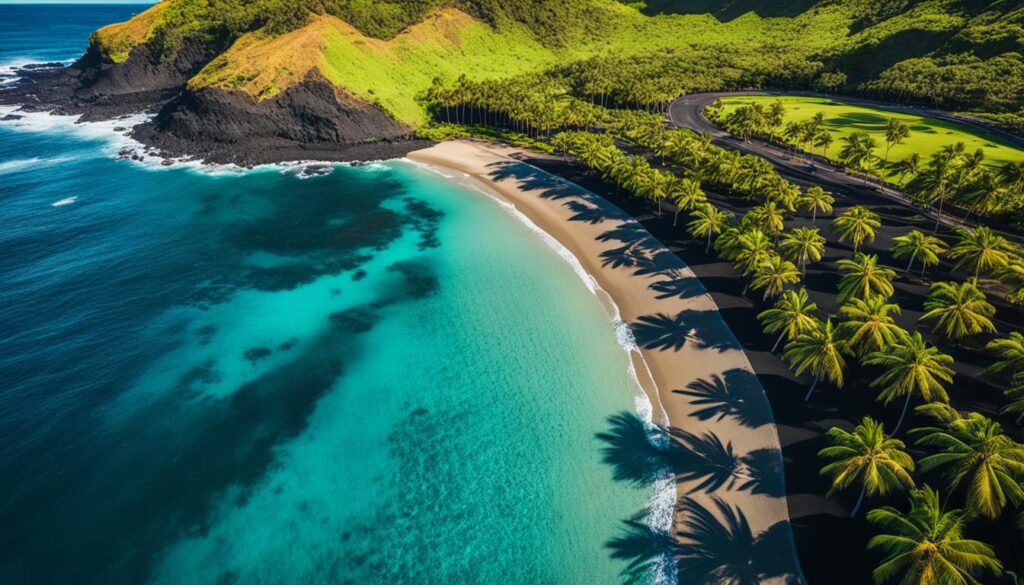
Maui’s Waianapanapa State Park
On Maui’s famed Road to Hana, Waianapanapa State Park and its black sand beach await. This beach, shaped by ancient lava flows, enchants with its ebony sands and pristine waters.
A Black Sand Wonder Along the Road to Hana
The park’s allure extends beyond its striking coastline. It invites exploration with lush trails, freshwater caves, and vibrant coral reefs. These offer opportunities for snorkeling in black sand waters.
Waianapanapa State Park is essential for those desiring to delve into Hawaii’s natural splendor. Its volcanic landscapes and tranquil waters make the black sand beach a sight to behold on the Road to Hana.
| Key Features of Waianapanapa State Park | Details |
|---|---|
| Black Sand Beach | Formed by the erosion of ancient lava flows, the park’s black sand beach is a stunning and unique sight. |
| Coastal Trails | Visitors can explore the lush, verdant trails that hug the coastline, offering breathtaking views. |
| Freshwater Caves | The park is home to several freshwater caves that are perfect for adventurous visitors to discover. |
| Marine Life | The vibrant coral reefs and clear waters of Waianapanapa State Park provide excellent opportunities for black sand snorkeling and observing the diverse marine life. |
Exploring Hawaii’s Volcanic Wonders
Hawaii’s volcanic landscapes, beyond the stunning black sand beaches, are a treasure trove for explorers. The dramatic cliffs and secluded black sand beaches of Pololu Valley on the Big Island, alongside the unique green sand of Papakolea Beach, reveal the incredible power and diversity of volcanic forces. These sites not only mesmerize with their raw beauty but also offer deep insights into the geological and ecological processes that have shaped the islands.
The hawaii volcanic beaches and the Pololu Valley lookout provide a window into the volcanic origins of the region. Meanwhile, the Papakolea green sand beach showcases the unique geological products of these forces. These sites are a testament to the ongoing geological and ecological processes that have shaped the islands.
By delving beyond the black sand beaches, travelers can gain a deeper appreciation for Hawaii’s volcanic origins and the ongoing evolution of these remarkable Pacific islands. The exploration of these volcanic wonders offers a truly immersive and educational experience. It connects visitors with the dynamic forces that have sculpted the Hawaiian archipelago over millions of years.
FAQ
What makes Hawaii’s black sand beaches unique?
Where can I find the most famous black sand beaches in Hawaii?
Can I swim at Hawaii’s black sand beaches?
What other volcanic wonders can I explore in Hawaii besides the black sand beaches?
Can I snorkel or dive at Hawaii’s black sand beaches?
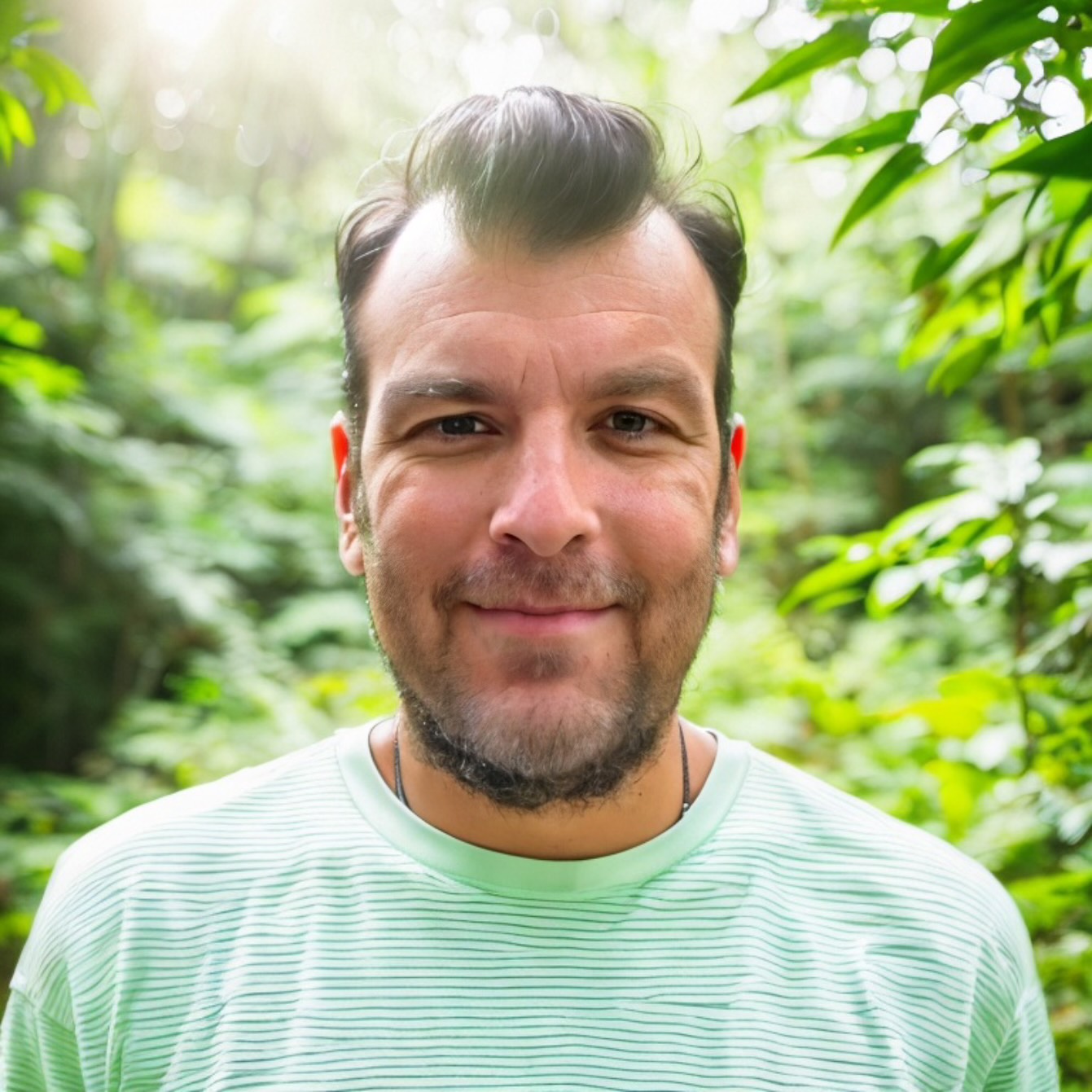
Scott Sweeney is the creator of Virtual Hawaii 360. Scott is a professional marketer and a lifelong Hawaii enthusiast. Scott splits time between Oahu and Dayton, Ohio. In addition to his marketing endevours, he is also a published Ukulele musician.

